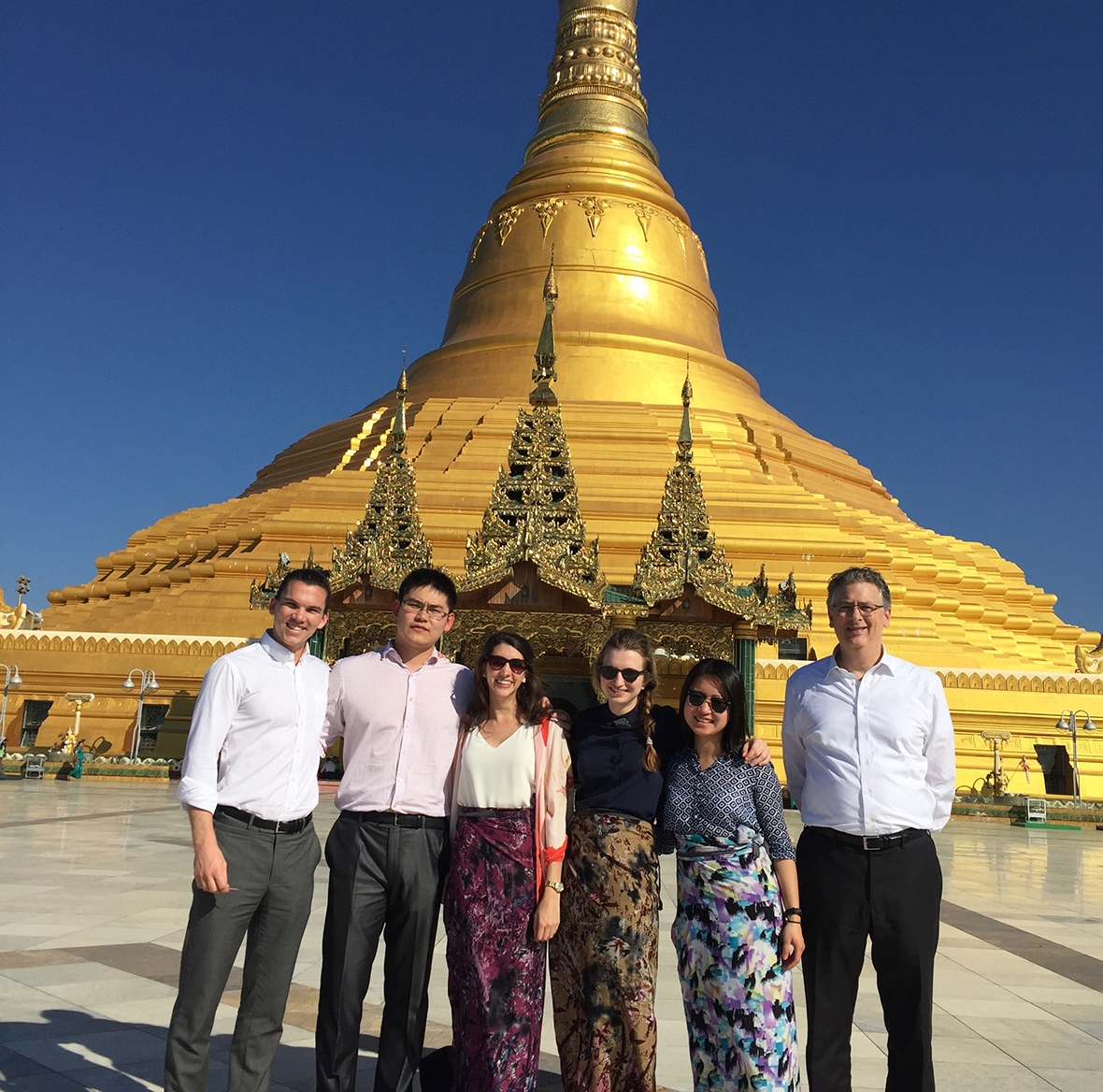Examining Myanmar’s Electrification Process

Photo Caption: Lisa Jenkins (fourth from left) during an Energy, Resources and Environment winter break trip to Myanmar to study rural electrification.
Lisa Jenkins
MA, ’18
Energy, Resources and Environment
When Lisa and nine other Energy, Resources and Environment students arrived in Yangon, Myanmar on a Sunday in January, the first thing they noticed was the heat. Coming from their respective winters in Washington DC, Bologna, and Nanjing, the shock of the sun almost overshadowed the culture shock.
However, when the sun set in the evening, they noticed something else about the city: the lack of lights. While most large cities glow at night with artificially-lit streets and apartment windows, Yangon was noticeably darker. When they attended their first meeting on Monday morning, this image of a not-quite-electrified city set the tone for their conversation.
The 10 students were in Yangon to research Myanmar’s electrification process: its successes, its challenges, its progression. Myanmar currently has only about 30 percent of the country electrified, with far fewer connections in the rural communities. However, the country’s new administration hopes to change this, with the goal of 100 percent electrification by 2030.
The students examined the plans that various organizations had given to Aung San Suu Kyi’s young government and met with various stakeholders about their thoughts. Lisa and her peers were excited that so many people were eager to hear their thoughts, from the International Finance Corporation to the Japan International Cooperation Agency, from Myanmar’s Ministry of Rural Development to the United States embassy.
On one occasion, Lisa and a group of students took a small commuter plane to Nay Pyi Daw, the country’s very new capital city. Despite being informed in advance, they still gaped at the emptiness of the city: its lack of a real city center and its virtually empty 10-lane highways, seemingly poised for the arrival of millions who did not seem to be coming.
On the last night in Yangon, the students invited a combination of Yangon’s Johns Hopkins SAIS alumni and other people they had met over the course of the week to a rooftop bar downtown and discussed their work and Myanmar in general. Lisa described the experience of seeing so many current and former students in the same place on the other side of the world as “remarkable.”
The research on the implementation of Myanmar’s electrification plan was ultimately compiled into a report and presented to the country’s government and its other stakeholders. For Lisa and her peers, the opportunity to see the policy-making process in action and be a part of those conversations was the rarest and most valuable part of their graduate school education so far (though, Lisa notes, learning how many ways Myanmar cuisine utilizes eggplant was a close second).